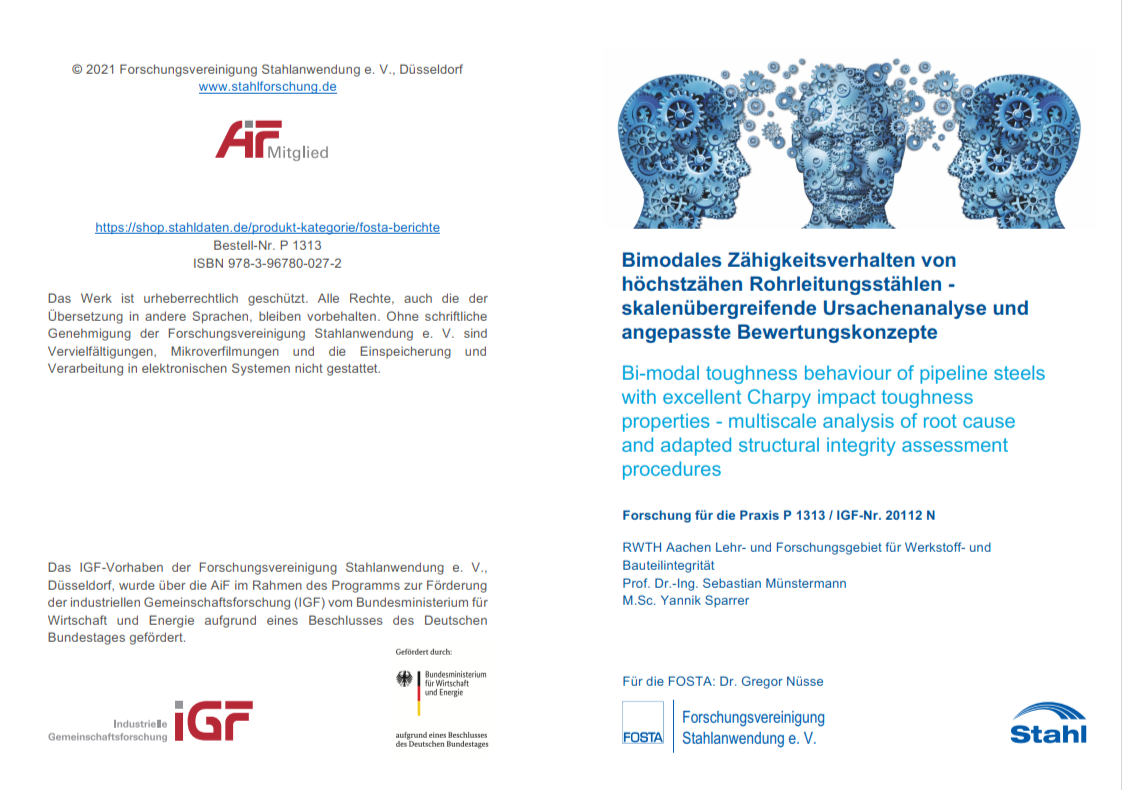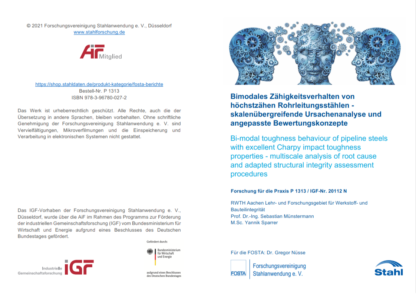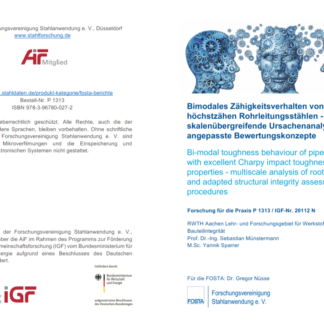Description
P 1313 – Bi-modal toughness behaviour of pipeline steels with excellent Charpy impact toughness properties – multiscale analysis of root cause and adapted structural integrity assessment procedures
For many decades, fossil fuels have been transported through kilometre-long pipelines. The need for a reliable pipeline transport network will continue to be indispensable in the future in order to provide fossil fuels and hydrogen to customers as an energy source. The pipeline steels required for the construction and expansion of the supply network have been continuously improved in recent years thanks to strong efforts by the steel and pipeline industry. Due to thermo-mechanical rolling strategies and an increase in the degree of purity of the steels, damage-tolerant microstructures could be developed, which led to an increase in strength and toughness properties. These excellent material property profiles offer great resource-saving lightweight construction potential for future applications. However, in these modern pipeline steels, failure phenomena that have not yet been sufficiently researched occur during toughness testing. These include inverse fracture behaviour, occurrence of separations or contracted transition behaviour. The latter is characterised by an overlap of the upper and lower shelf values over a temperature range of 10-30°C in the charpy impact energy-temperature diagram, which again leads to uncertainties in the component design and associated application inhibitions.
Within the scope of this project, a bainitic pipeline steel of grade X65, which exhibits contracted toughness behaviour, was extensively characterised. Titanium nitrides (TiN) and calcium sulphides (CaS) were identified as crack-initiating microstructural components for both brittle and ductile material failure. Microstructure simulations showed that the local stress and strain concentrations in the microstructure vary depending on the position, size and tilting of the inclusion. The highest stress concentration was detected in simulations with a 6µm TiN inclusion with 45° tilt. The development of a scale-bridging simulation methodology subsequently enabled the influence of different inclusion configurations on the material and component behaviour to be evaluated. The microstructure-related parameter sets derived in the simulation of representative volume elements (RVE) are used in the macroscopic damage model to represent the material behaviour in the charpy impact test. Using this methodology, it was possible to numerically reproduce the contracted transition behaviour and transfer the model to pipeline applications. In the component simulations, the pipeline fails brittle or ductile depending on the selected microstructure-based parameter set. A microstructure with critical inclusion leads to brittle component failure and a higher crack propagation rate, while a microstructure without critical inclusion causes ductile component failure.
The developed scale-bridging simulation approach for microstructure-based component assessment can be transferred to other material concepts and application areas in the future. On the one hand, this makes it possible to support the elucidation of material-physical phenomena and, on the other hand, to promote integrative material and component design for resource-saving lightweight construction.
Published in:
2021
Authors:
Prof. Dr.-Ing. S. Münstermann, M.Sc. Y. Sparrer




